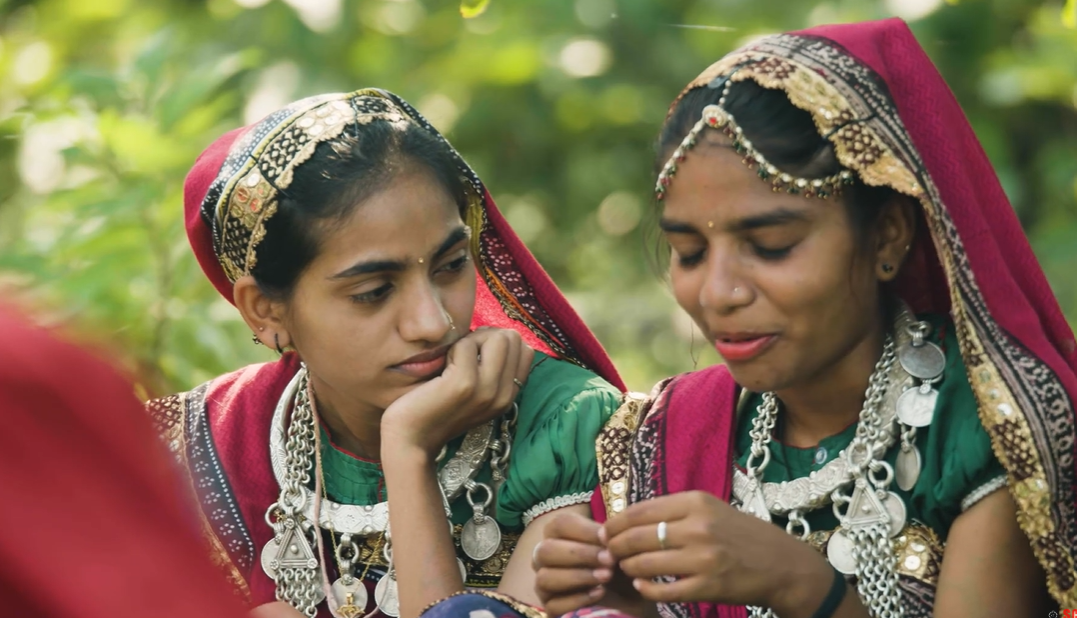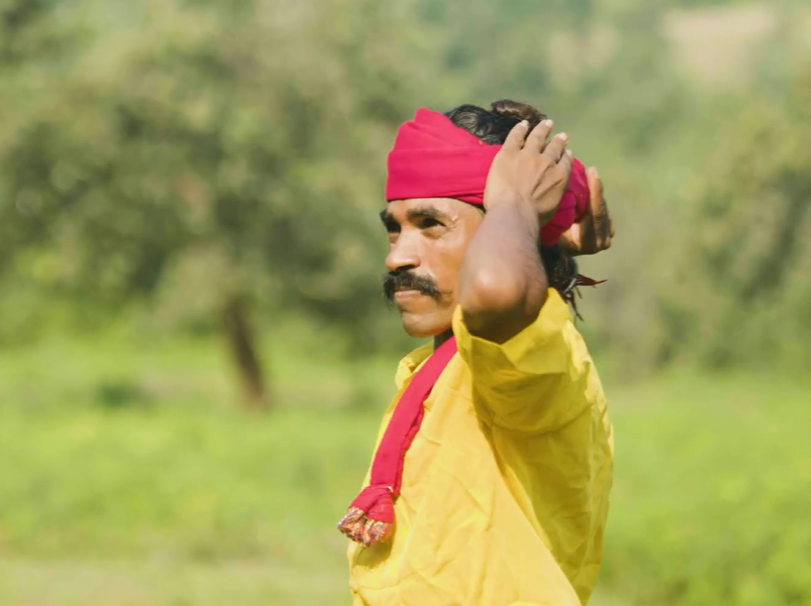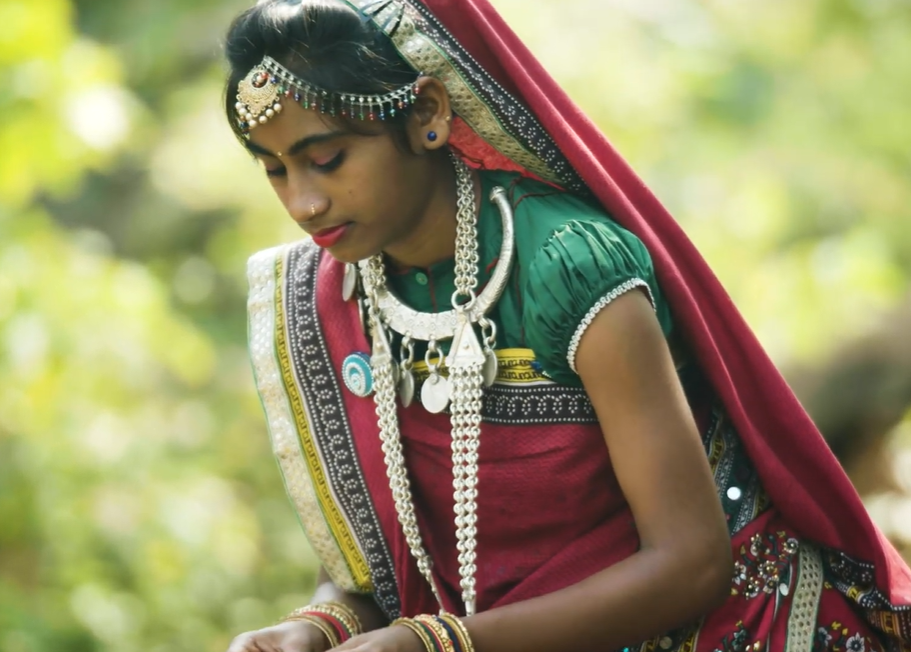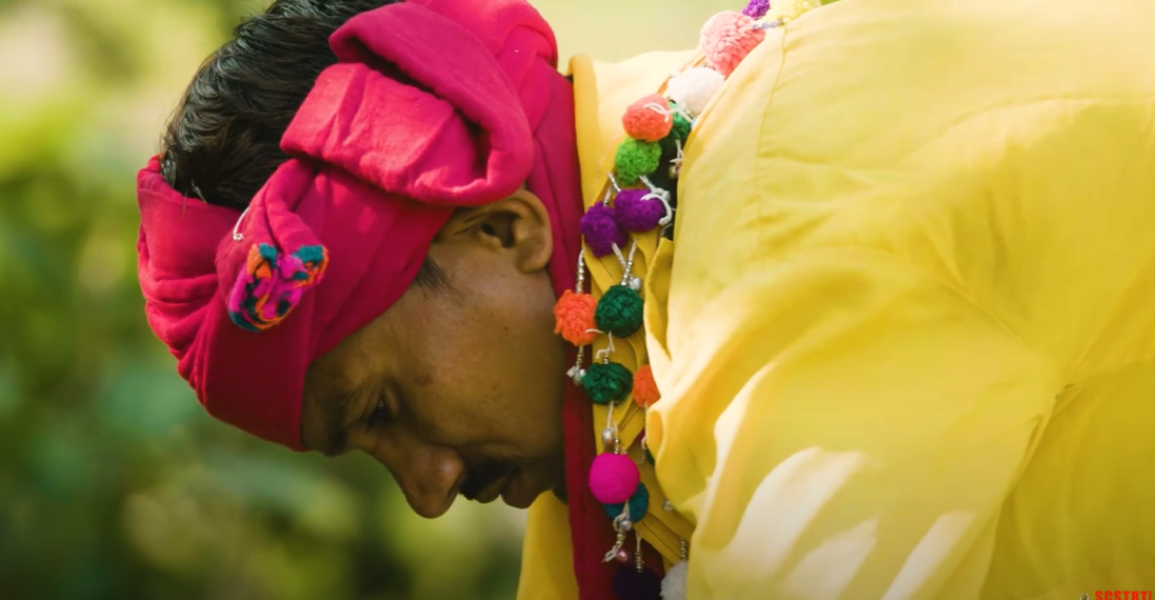
Themes
tribal clothing and textiles
Rathwa’s Traditional Attire, gujarat

Rathwa women adorn themselves in gaudy ghaghra (Petticoat) along with its vibrant-colored choli (blouses), normally stitched from bright, embroidered fabric. Such clothes often incorporate elaborate intricate designs that showcase the artistic treasure of the tribe. Dressing at such festival occasions like Holi and at the Kavant Fair is done in bearing their best clothes and being fully proud culturally. The dupattas (headscarves) are draped in a way that they show the beautiful colors of their dresses and the jewelry they wear.
Both men and women in the Rathwa community adorn traditional kathir and silver jewelry, which adds to the pride of their attire. Women's jewelry puts together several varieties of nose rings, earrings, hansadi (that is varied types of chains and necklaces), and bangles, but necklaces and rings are the most common for males. Jewelry is not only meant for adornment but also carries the importance of riches and high status in society besides their identification ethnically. These ornaments are made at the local artisans' shops, considering the tribe's indigenous skills in metalwork and also their deep connection to cultural traditions. But the attires worn by men of Rathwa have all these characteristics and mostly exhibit simplicity and practicality harmonious to their agrarian life.


The dhoti normally worn typically as white or light in color, renders ease to the wearer's movements for activities done daily and dances. Such comfortable attire is paired with a long and loose-fitting shirt, for that matter. To put a dash of color in their non-festival lives, they drape bright bandi (shirt without sleeve and collar) and tie long cloth on their wrist over their shoulders, which becomes particularly striking during festivals and dances like the Gher dance, enhancing the cultural vibrancy of their celebrations. Body painting is the most important feature of the traditional dress and ornamentation of the Rathwa tribe when it comes to rituals and dances. The formulation may include white lines and dots all over the bodies of men and women, using face or arms most frequently, to symbolize spiritual protection and cultural identity.

During festivals such as Holi, the community ritualizes painting bodies as a ceremonial process of connecting with the divine and celebrating life. These embodiments are spiritual and wonderful, showing how the tribe behaves differently from others as regarding cultural conduct. Another important aspect of the traditional costuming of the Rathwa tribes is that on such headgears. Men will adorn their heads with brightly colored cloth twisted like turbans, mostly decorated with feathers or beads. Such turbans symbolize honor, pride, and status in the community. However, bright-colored yet personalized scarves or veils may also be worn by women, at times laden with decorative items like beads or sequins, making their colorful attire even as vibrant during festivals and ceremonies. They enhance the tribe's uniqueness in appearance while serving to emphasize the role and importance of ceremonial dressing in the culture.

